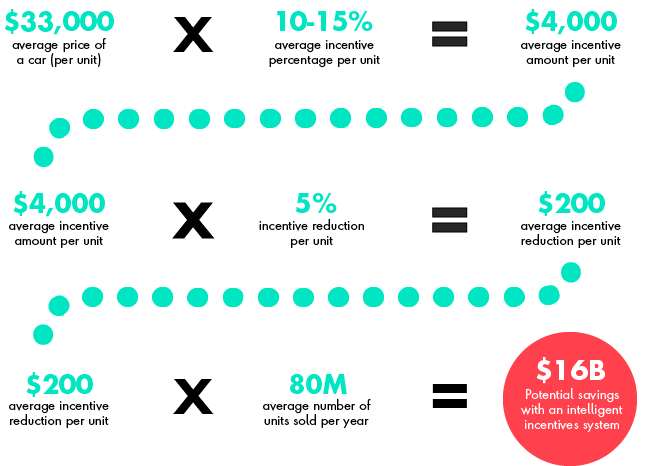The customer journey component is a good example. By opening the gates between OEM and NSC data and that of dealers, an unprecedented, rich database of customer information is now available for machine learning technologies to sift through and make sense of in order to drive better decision making. This combination of algorithms and machine learning can identify the specific conversion triggers and propensity to purchase of each unique customer, not to mention feed this data back to the OEM, NSC and dealer employees in a user-friendly dashboard.
Propensity to purchase is radically important here because it allows sales managers to identify the exact moment when an incentive would effectively bring the customer across the line from pre-sale to active. Better yet, dealers can also see who is most probable to buy without any kind of incentive, thereby avoiding unnecessary discounts and increasing their margins.
The next step involves the system combining the aforementioned customer-specific data points with important bits from product and market. On the product side, factors such as where the model is in its lifecycle and how many units have been sold thus far help to calculate the incentive. When the last pillar of market data is introduced, the puzzle is complete. Marketing data isn’t always aligned with incentive spend. It’s important to look at the factors that influence how easy it is to sell a car at a certain stage (e.g., appearance, year, market awareness). These variables may influence whether a dealer decides to invest more in incentives or marketing to close a deal.
Data points revolving around competing product sales, economic fluctuations and the brand’s growth rate overall are merged with customer and product information to generate an informed recommendation as to what incentive should be given to a specific buyer, at a specific time, for a specific product. Using all this data, the system could come up with a recommendation to support the salespeople in their decision about a personalized offer.
This method of applying data to work backwards toward an incentive offer is of growing interest across transportation and mobility. Multiple manufacturers and service providers are taking steps toward achieving such an integrated system. Volkswagen, for example, recently announced that it will be revisiting its dealer contracts in order to incorporate data-sharing agreements and a revamped incentives program.1
Similarly, FCA is developing a global platform solution that fuses marketing and experience technologies with enhanced data schemes. This includes the previously mentioned concepts of behavior pattern recognition and informed offerings that can be paired to derive personalized campaigns during pre-sales.



















